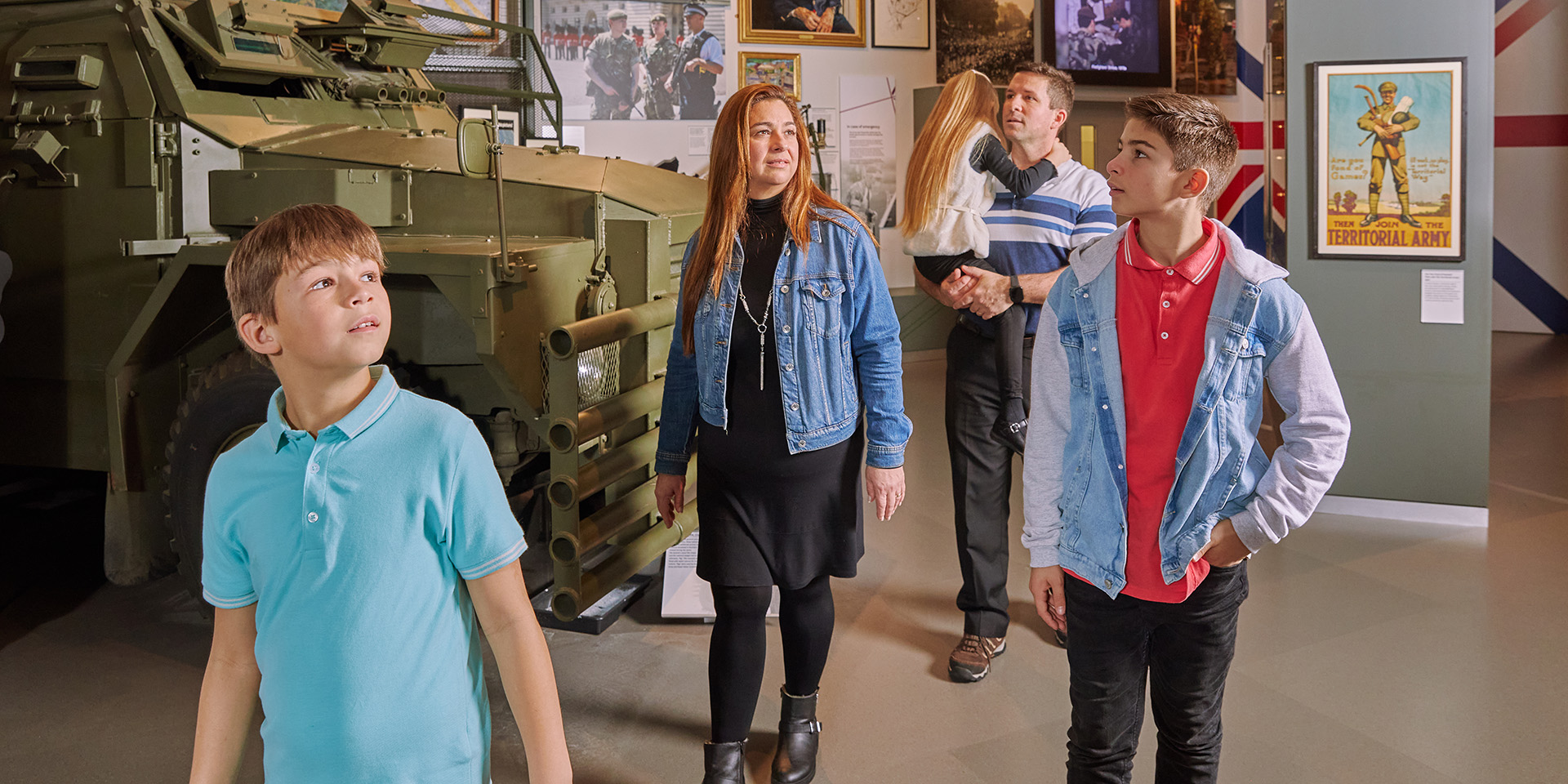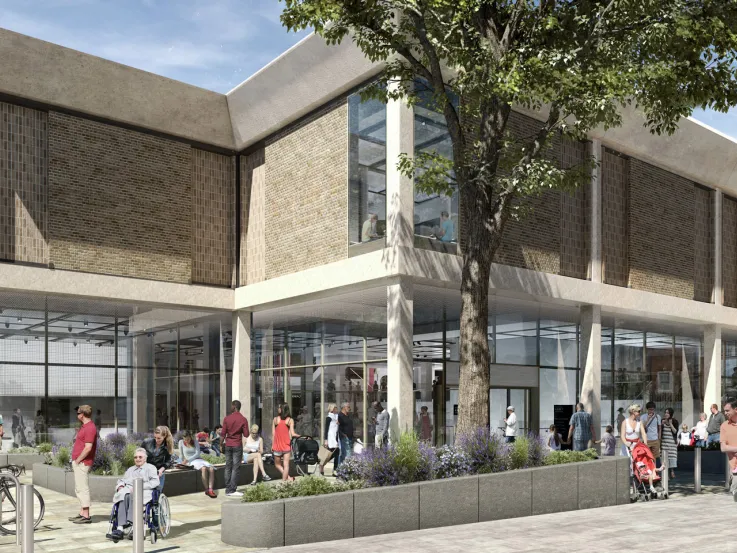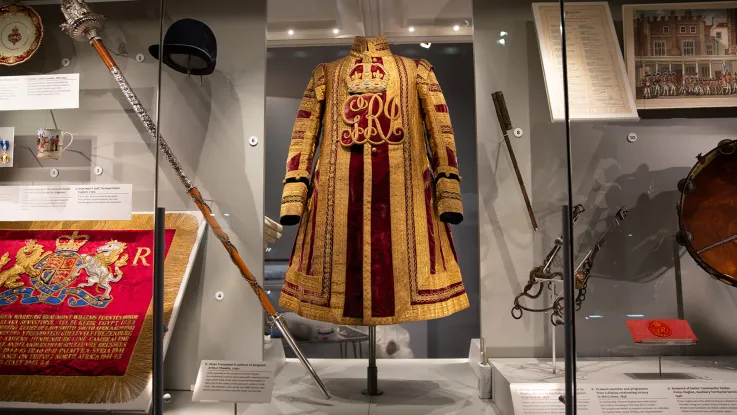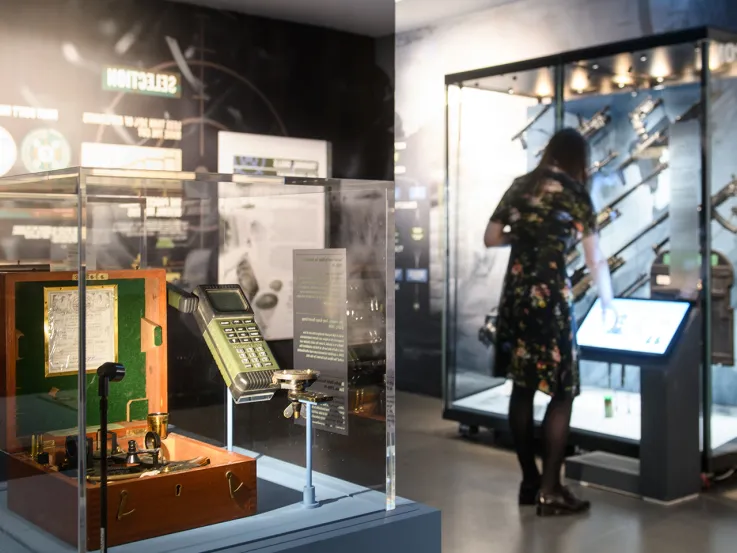Army at Home gallery opens at the National Army Museum

Thursday, 19 September 2023
A newly refreshed gallery at the National Army Museum explores the British Army’s various roles on the domestic stage from the 1600s to the present day.
Starting with the Civil Wars and the story of the Army's origins, the gallery reveals the part that soldiers have played in shaping and defending the United Kingdom, as well as highlighting their ceremonial service and the support they provide to civil authorities.
It showcases how soldiers have cultivated a national identity through shared service, ceremonial duties and acts of remembrance. It also explores the Army's impact on local communities, from building fortifications and barracks in our towns and countryside, to supporting our public services in times of emergency.
Army at Home tells the story of the men and women who have served and protected us through human conflicts and natural disasters. In times of war, many of those who guarded the nation's shores were part-time. By taking on home duties, they allowed full-time soldiers to focus on their European and global commitments.
The gallery highlights this long tradition of 'citizen soldiers' in Britain. It also focuses on the rich ceremonial heritage of the Army, and its role in preserving the public rituals that continue to bind us together.
Matt Thomas, Temporary Gallery Interpretation Lead at the National Army Museum, said:
'Ever since its formation, the Army has played a leading role in the great occasions of state, including coronations, held to celebrate royal succession and promote national identity. They were spectacular displays of pageantry and military strength.
'My favourite object is the scroll depicting the 1937 coronation parade for King George VI. It was probably designed as a toy or souvenir but shows regiments from across the British Empire demonstrating their allegiance to the new King. Fully unrolled it measures over five metres, showing the massive scale of the procession.'
The Army plays a central role in state occasions, such as Trooping the Colour, the Changing of the Guard at Buckingham Palace, and other royal events. These ceremonies not only symbolise the continuity of the British monarchy but also serve as expressions of national identity.
Two key objects that highlight the Army’s ceremonial role are a State Trumpeter's coat, and a pair of white leather gauntlets worn by Justin Maciejewski, Director of the Museum and Her Majesty’s Bodyguard of the Honourable Corps of Gentlemen at Arms, worn at during the funeral of the late Queen Elizabeth II.
The Army has also played a pivotal role in commemoration and Remembrance. The gallery includes a fragment of the original Cenotaph unveiled on 19 September 1919 for Peace Day in the wake of the end the First World War, and a never been seen before George Cross, posthumously awarded to Bombardier Henry Reed for gallantry during the Second World War.
This gallery is the latest stage in a programme of refreshment of the National Army Museum’s permanent exhibition spaces. Drawing on five years of visitor feedback and new scholarship, these new galleries help visitors better understand the history and heritage of soldiers and their impact in Britain and abroad.
The project has created long-lasting spaces that are more adaptable and flexible. As a result, there are over 50 per cent more objects on display than when the Museum reopened after a major rebuilding project six years ago.
Notes to editors
For more information, please contact the National Army Museum Communications Team at press@nam.ac.uk
About the National Army Museum
The National Army Museum shares the history and heritage of our soldiers and their service in the Army, across the globe and down the centuries. Through our collections we explore the history of the Army from its origins to the present day. We aim to engage and inspire everyone with the stories of our soldiers and how their service shapes our world; past, present and future.



